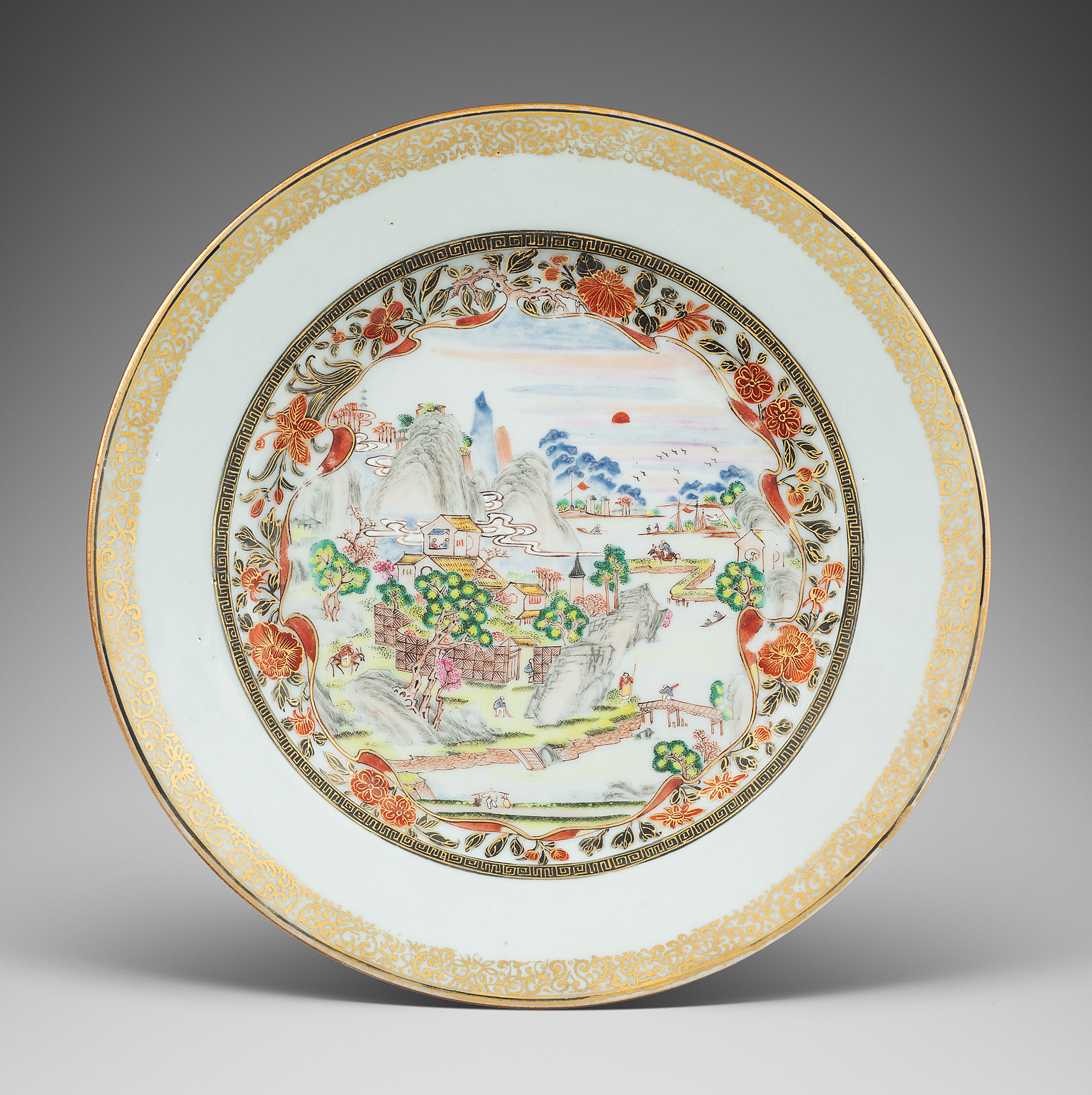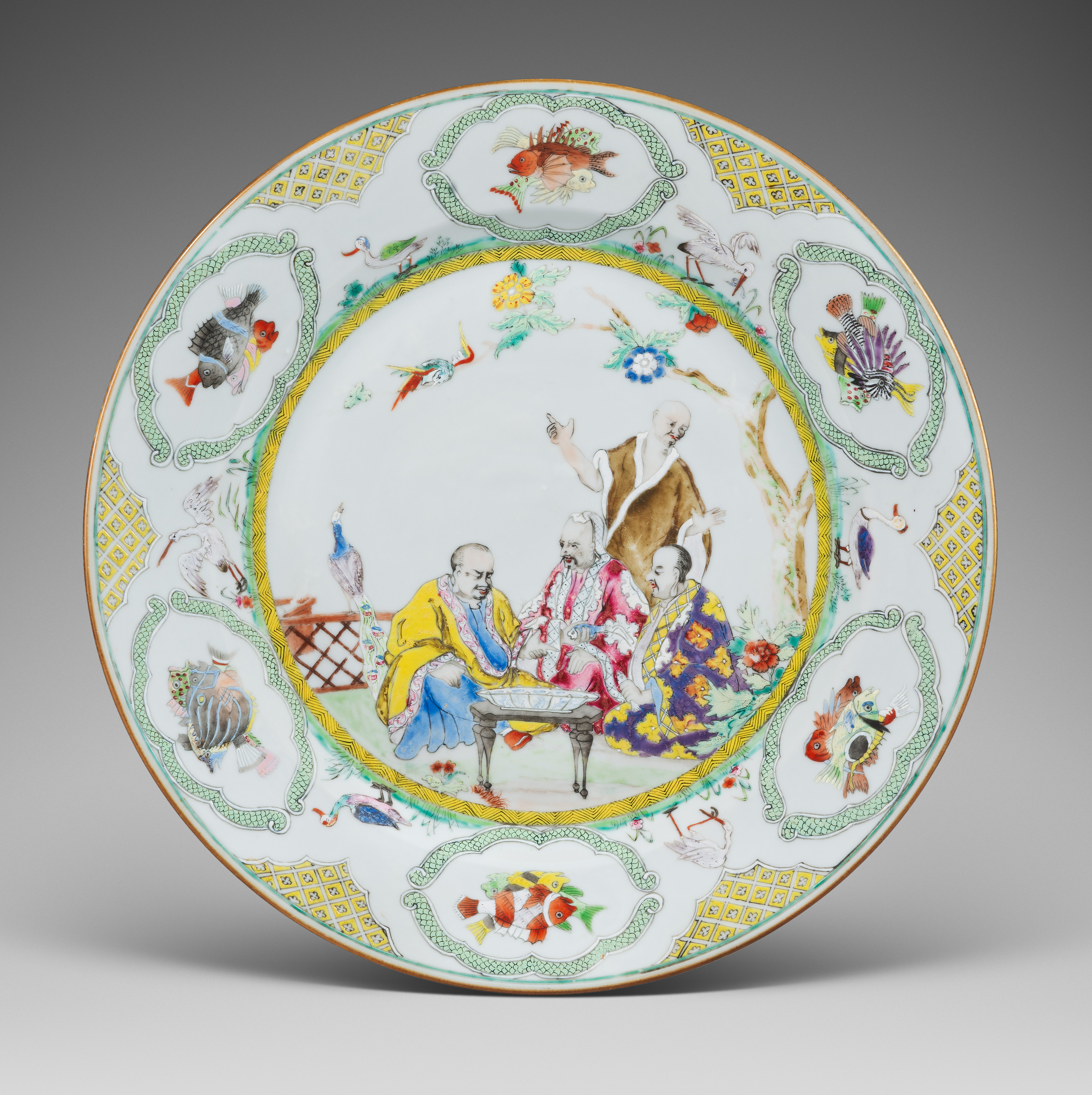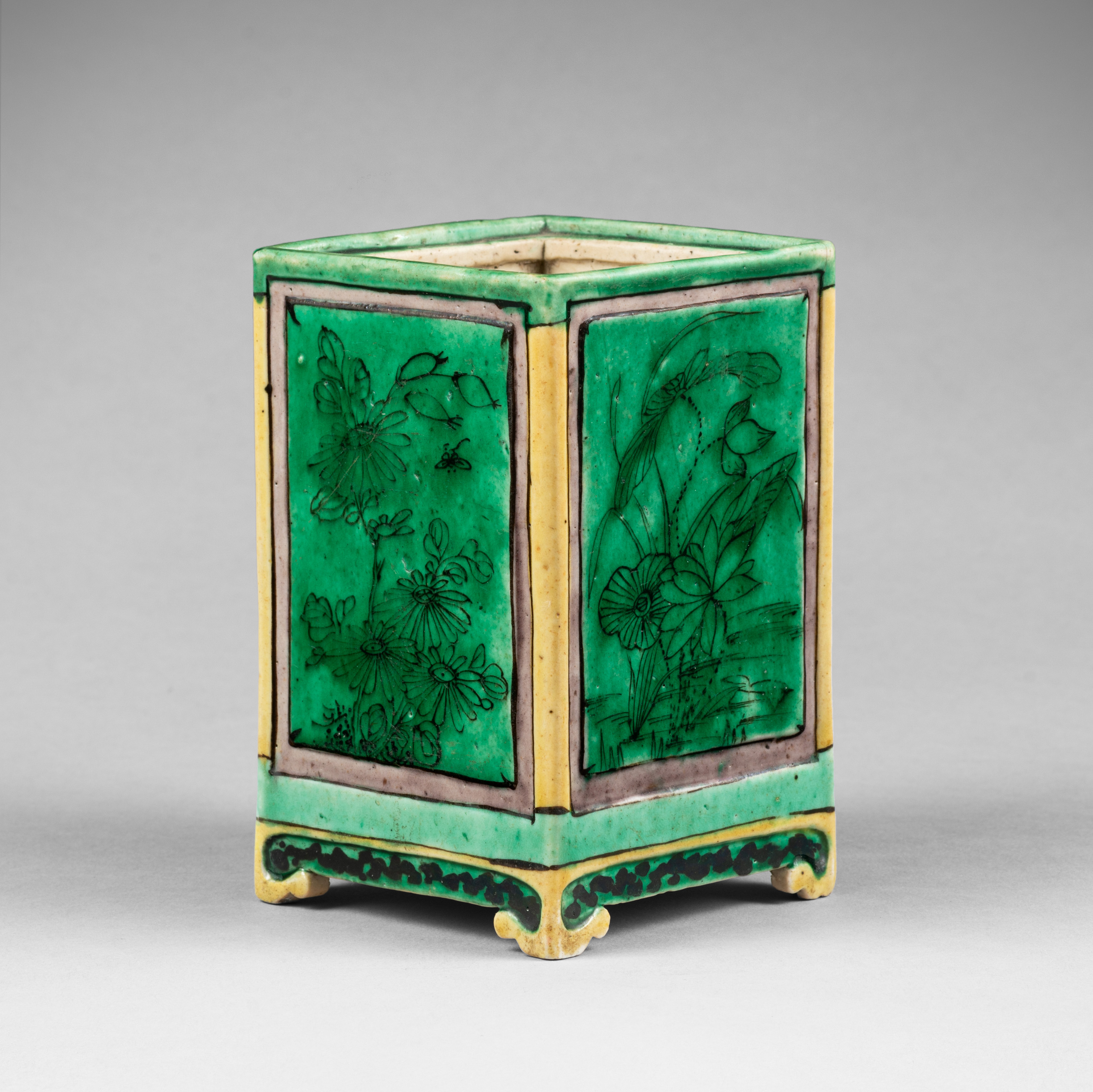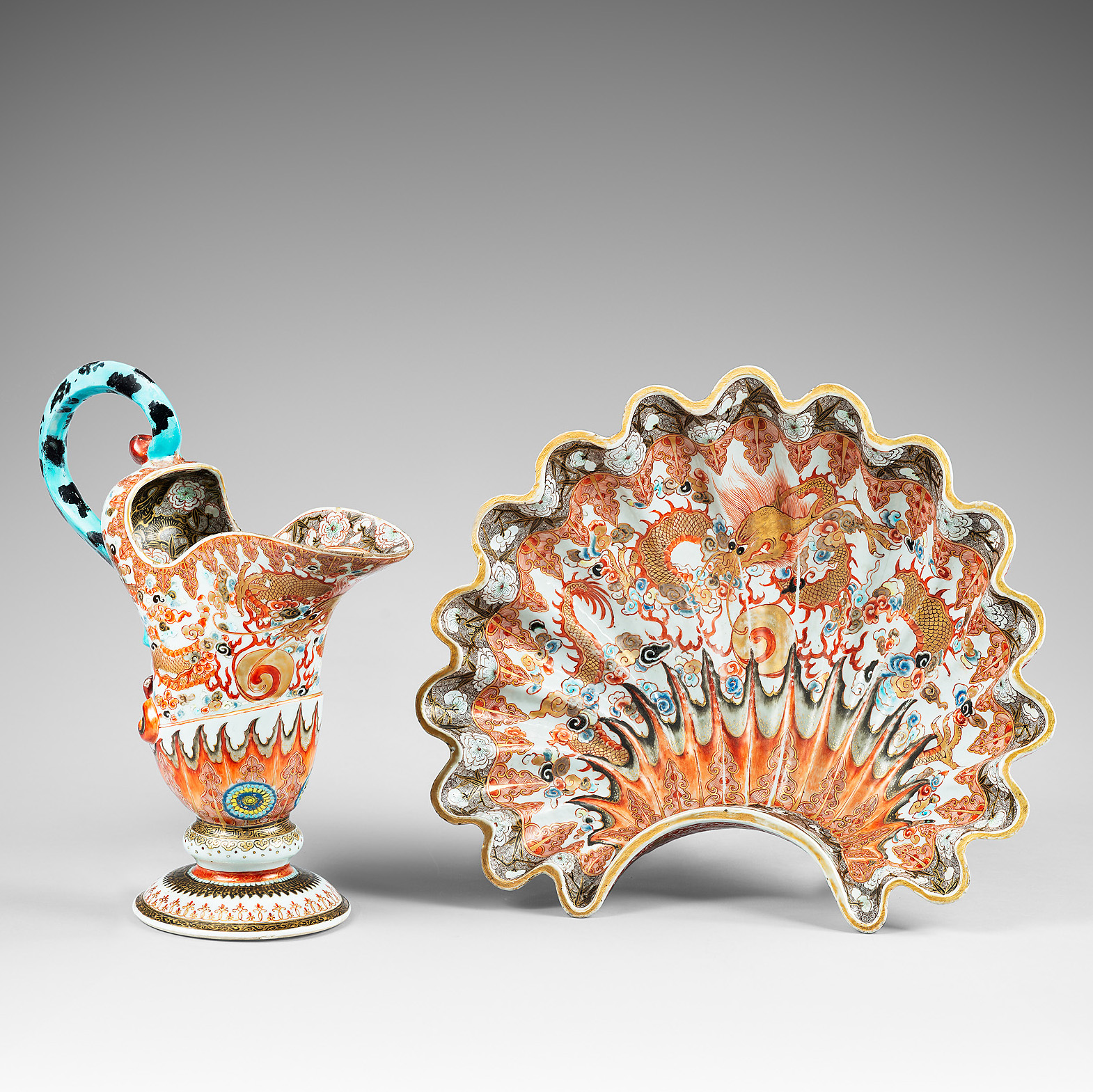
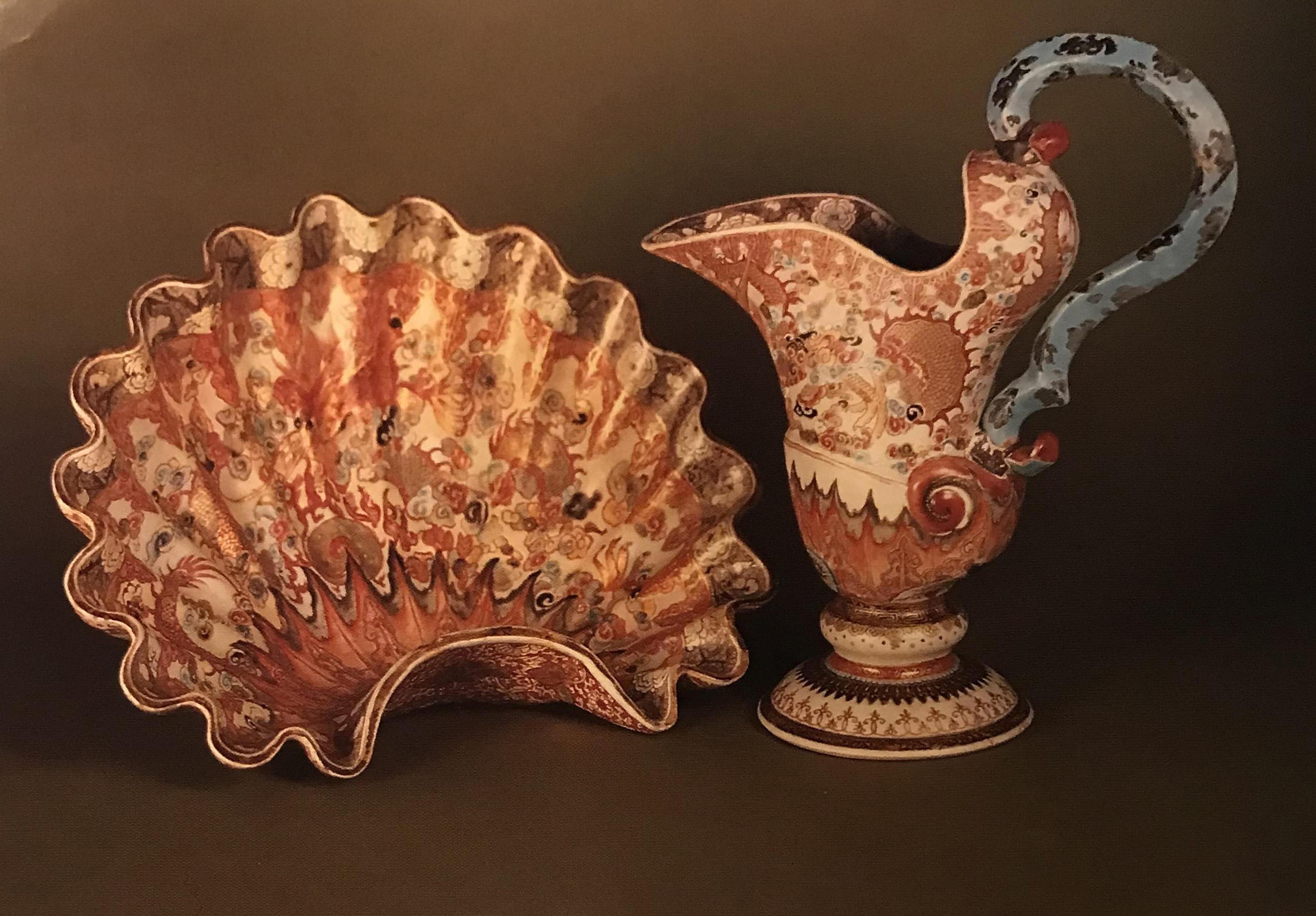
A rare, very fine and massive shell-shaped “dragon” ewer and basin. Yongzheng
Following a silver form, probably painted with a unique decoration, the ewer with a hight scroll painted with irregular grisaille spots on a light blue ground, the sides painted predominantly in rouge-de-fer and gilding with blue, yellow and grisaille, with a large dragon amid clouds, below a border of pendent stiff leaves and above a similarly decorated volute reserved with two chrysanthemum blooms, the foot with a knop above the domed base, decorated with numerous formal borders, the interior of the mouth with prunus blossoms and bamboo reserved on a sepia spiral ground, the deeply scalloped basin similarly decorated with a large dragon amid multicolored clouds within a prunus and bamboo border, the reverse with a rouge-de-fer floral border, the reverse with a rouge-de-fer floral border suspending tassels and a ring of brightly colored flowers around three small conical feet.
- Country:
- China
- Period :
- Yongzheng (1723-1735)
- Material:
- Porcelain
- Dimension:
- H. (ewer) : 12 in. (30,4 cm) L. : 36 cm (14,5 in.)
- Reference :
- E002
- Status:
- sold
Provenance
-M. Lebrun, 12 Bd Waterloo, Brussels
-Sotheby's Monaco, Belle Collection de Porcelaines de Chine, 5 mars 1989, lot 323
-An important Dutch dealer
-From an important Italian collector
Related works
For an ewer and basin of this form, but decorated in the imari palette, from the Honble. John Spencer (1708-1746), see Christie’s London, The Spencer House sale, 8 July 2010, lot 1013.
Another ewer and basin were in the collection of Leon Levy (Sotheby’s Paris, le 2 octobre 2008, lot 11).
See also David Howard and John Ayers in China for the West, vol.1, London, 1978, p.144, pl.125 (for another ewer and basin decorated in the Imari palette).
A comparable Canton painted enamel ewer and basin are in the collection of the Hermitage Museum, St.Petersburg, illustrated in Tatyana B. Arapova, Chinese Painted Enamels, Moscow, 1988, pl.2
Notice
Ewer and basin of this shape were first commissioned by private traders in China during the Yongzheng period (1723-1735). This type of basin was frequently used in Portuguese domestic silverware of the mid eighteenth-century. The shape of the ewer was inspired by a seventeenth-century metal model, the descendant of opulent and elaborate sixteenth-century nautilus shell prototypes. These models of ewers usually dated from 1720 to 1740 but the directors of the Dutch East India Company ordered similar set during the Qianlong period (1736-1795). In the western world, these sets were considered as very luxury articles, used for washing hands.

